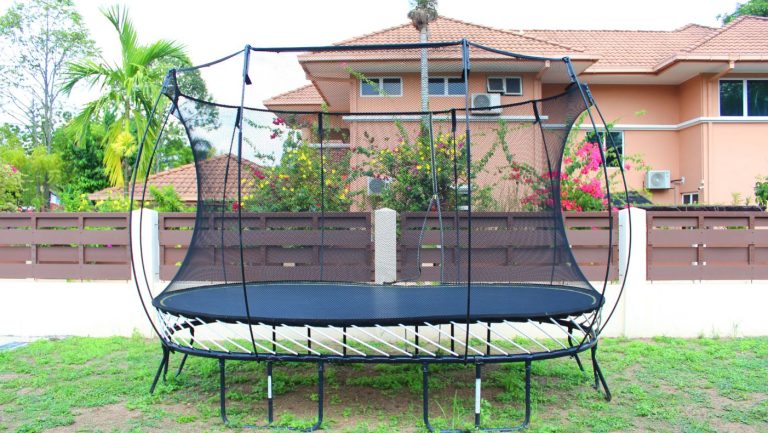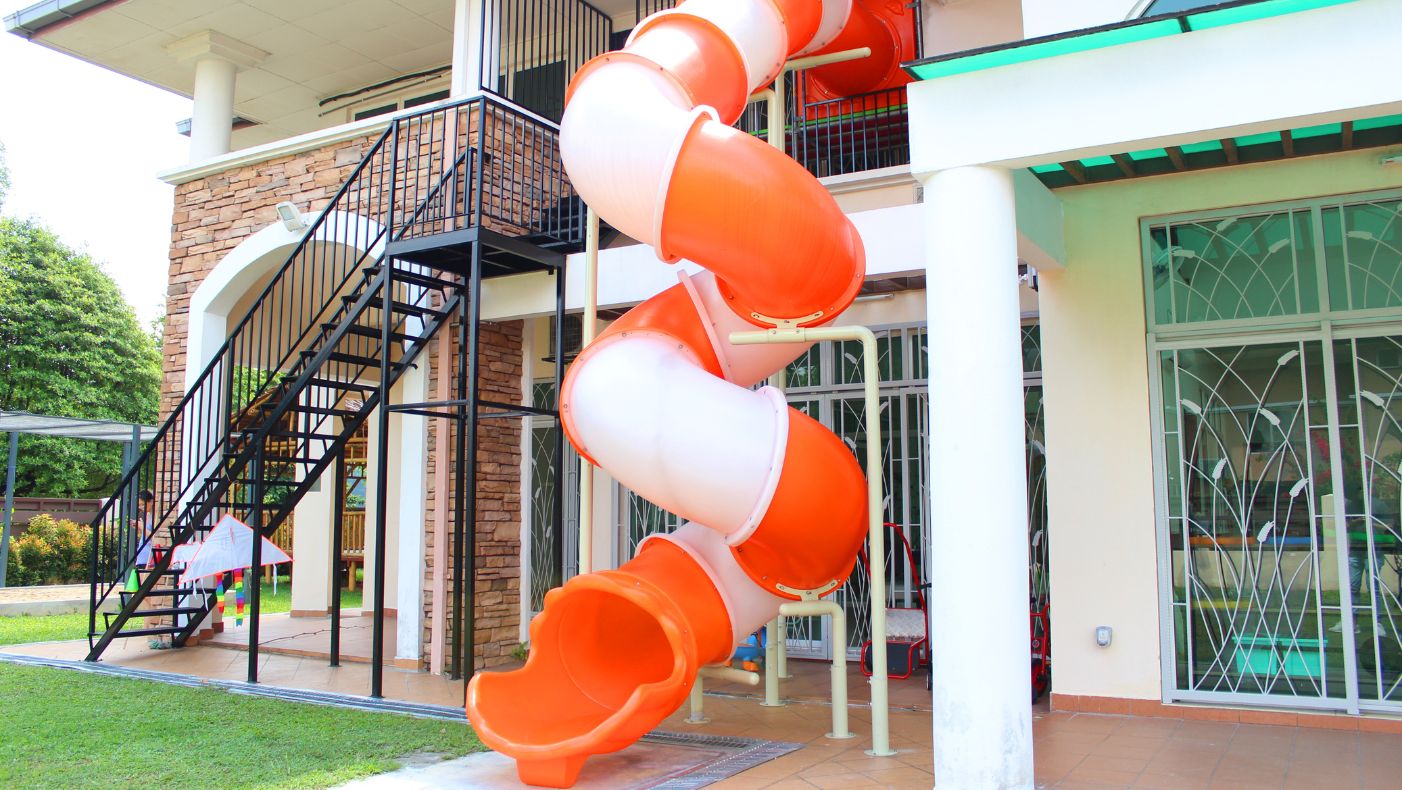Sensory Playground
August 27, 2020 2025-03-01 0:37Sensory Playground


A Sensory Playground for Growing Minds
Opening Up to the Brave New World – Through Your Child’s Eyes
From birth, a child's brain is a dynamic canvas awaiting its first brushstrokes. Every sensory experience, from the soft touch of a parent's hand to seeing the vibrant colours from their surroundings, paints intricate neural connections.
As they begin to come into contact with the world, their senses become the tools of discovery: Sight, hearing, touch, taste, and smell, balance and movement, and body awareness. These early experiences shape the developing brain, laying the foundation for future learning, cognition and emotional development.
Challenges Faced by Children, Concerned by The Parents When Not Being Addressed Early On
Children with neurodevelopmental delays, be it normal or children of special needs, face significant challenges that frustrate both the child and their parents. Common issues include:
Social Difficulties
Has difficulty understanding social cues, such as not noticing when someone wants to join a game or when it’s time to take turns, which can make it harder to form friendships and may lead to feelings of being left out.
Communication Impairments
Struggles to put thoughts and feelings into words, often leading to frustration, tantrums, or being misunderstood by others during daily interactions.
Sensory Processing Issues
Overreacts or underreacts to sensory input, such as loud noises, bright lights, or certain textures, which can lead to anxiety, meltdowns, or avoiding activities like birthday parties or playgrounds
Behavioural Issues
Shows repetitive behaviours like hand-flapping or lining up toys, acts impulsively without thinking and struggles to manage emotions, which can result in outbursts or challenges during group activities and playdates.
Academic Struggles
Struggles with learning and staying focused, leading to lower academic performance and a drop in self-confidence.
Closer Look: Outdoor Facilities

Infinity 8 Playground
The painted tracks, numbers, and letter paths are more than colourful designs—they’re a fun, interactive way for children to learn while moving!
How It Works:
These tracks provide a playful approach to early literacy, numeracy and recognising directions, blending physical activity with learning.
Benefits:
Builds gross motor skills, spatial awareness, enhances memory retention and cognitive engagement

Custom Obstacle Course
Designed and built respecting the neuroscience approach, it has variety of courses like balance beams, hoops, a monkey bar, and a flying fox. Backed by the safety use of harness and aided by teachers through individualised assessment and safety monitoring.
How It Works:
Balancing, swinging, and navigating this course enhances gross motor skills, spatial awareness, and motor planning.
Benefits:
Builds confidence, promote risk-taking in a safe environment, and develop problem-solving skills

Trampoline
More than just a fun bounce—it’s a powerful tool for sensory integration and motor skill development. Jumping on it provide release of pent-up energy and giving the sense of liberation.
How It Works:
Engages the vestibular system, which is crucial for spatial orientation and coordination. Also offers proprioceptive feedback (sensing the position and movement of the body), producing calming and organising effects on children’s nervous systems.
Benefits:
Physical release of energy, sensory regulation and self-soothing, boosting mood and confidence, developing self-regulation, brain and cognitive development

Green Natural Field
As opposed to synthetic grass, children get acquainted with nature, learning life itself from where it starts; cultivating love and fosters a deep sensory connection and appreciation for the environment.
How It Works:
The green and open space encourages large motor play, cooperation, and creativity in group games. Connect with nature by customised activities that employ movement, games, and discovery.
Benefits:
Sensory stimulation, stress reduction, improved attention and focus, vitamin D absorption, physical development, social and emotional development

Large Sand Pit
Sand play activities provide a sensory haven where kids can dig, build, and explore.
How It Works:
Actions such as digging, scooping, and pouring provide tactile experience either by use of tools or hand.
Benefits:
Promotes imaginative play while developing sensory processing skills, development of hand-eye coordination and strengthen finger muscles needed for future tasks like writing

Bamboo House
The charming house offers a unique blend of imaginative play and natural exploration. This structure serves as a cozy, quiet spot for storytelling, group play, retreat space or even solo reflection.
How It Works:
Provides great atmospheric learning through connecting with natural materials, sparking curiosity and respect for the environment.
Benefits:
Enhanced learning ability, self-regulation

Outdoor Shower Spaces
Adds a refreshing, playful element to our outdoor environment, allowing children to experience water play in a new way.
How It Works:
Washing off sand, cooling down after a physical game, or simply splashing around in the water offer multisensory experience that supports sensory integration.
Benefits:
Sensory input that aids in temperature and tactile regulation, promotes relaxation and emotional well-being

Outdoor Cooking Spaces
Our outdoor cooking space with a built-in child-friendly kitchen is a favourite spot for kids to experience the magic of cooking!
How It Works:
Children learn essential life skills in a fun, hands-on way, all while enjoying the sensory wonders of food preparation in the open air.
Benefits:
Hands-on skill development, math and science learning, sensory exploration and awareness, independence and confidence, healthy habits and teamwork

2-Storey Children’s Slide
A towering two-storey slide beckons young adventurers, a fun yet effective activity to overcome fear.
How It Works:
As they plunge down the slide, they experience a rush of adrenaline and a sense of accomplishment.
Benefits:
Stimulates senses, enhances motor skills, boosts confidence, overcome fears and develop a sense of bravery

Personal Garden
Gardening activities like digging, planting, and watering stimulate various aspects of a child's development.
How It Works:
Incorporating sensory experiences, physical activity, and cognitive challenges, it enhances neurodevelopment for children’s growth in all senses.
Benefits:
Physical activity refinement and enhancement, sensory stimulation through nature, cognitive development, social-emotional development

Outdoor Art Area
An outdoor art area fosters creativity, self-expression, and sensory exploration in a natural setting. It encourages children to engage with different textures, colors, and materials while promoting fine motor skills and imaginative thinking.
How It Works:
Creative activities that are coupled with the benefits of outdoor elements.
Benefits:
Sensory stimulation, motor skill development, social-emotional development, connection to nature
Indoor Facilities

Indoor Gym
Equipped with balance beams, climbing structures, and soft mats, kids work on their balance, strength, coordination, and flexibility.
How It Works:
The indoor gym activities contribute to sensory integration, especially through vestibular (balance) and proprioceptive (body awareness) input.
Benefits:
Develop muscles and improves the ability to focus and sit still during quieter activities, emotional regulation and fine motor control

LEGO Play
A versatile and engaging activity, encouraging imaginative play for solo and group.
How It Works:
When children engage with LEGO, they develop important cognitive and fine motor skills through building structures and work through challenges.
Benefits:
Enhanced spatial awareness, planning, problem-solving abilities, strengthens hand-eye coordination and finger dexterity.

Neuro Rhythmic Play (NRP) Room
The NRP Room is a specialised space designed to address the sensory needs of our students. It is equipped with sensory integration tools to help children regulate their sensory input and develop appropriate responses to various stimuli.
How It Works:
It involves the use of sensory integration tools such as textured balls, soft swings, and tactile boards to perform sensory integration activities.
Benefits:
Support the development of the vestibular, proprioceptive, and tactile systems, allowing children to process and respond to sensory experiences more effectively.

Messy Play Room
The room where children get to explore textures, colours, and materials in a free and uninhibited way.
How It Works:
From finger painting and slime-making to sand play and water activities, messy play fosters creativity and supports sensory exploration.
Benefits:
Strengthening tactile sense and helping with self-regulation, promotes social interaction and teamwork through cooperative play, practice important life skills, such as cleaning up and responsibility

Dining Area
Spacious and welcoming dining area is where children practice essential life skills.
How It Works:
Children learn skills like feeding themselves, table manners, and social interaction. Meals are a time for children to sit down together, engage in conversation, and learn about healthy eating.
Benefits:
Develop independence, fosters social skills as children practice communication, sharing, and etiquette in a relaxed and supportive environment

Multipurpose Hall
Multipurpose space for learn and play. Consists of versatile indoor space, used for various activities.
How It Works:
Thematic activities such as group learning, performances, physical education, and community-building events take place.
Benefits:
Enhanced social skills, collaboration, and physical development, space for rest and relaxation during busy days
Our Partners








